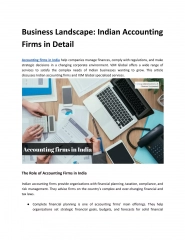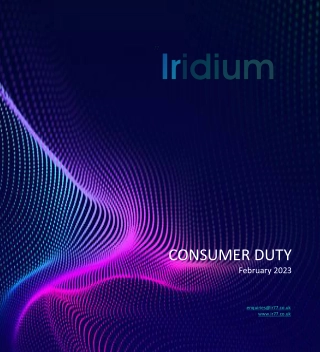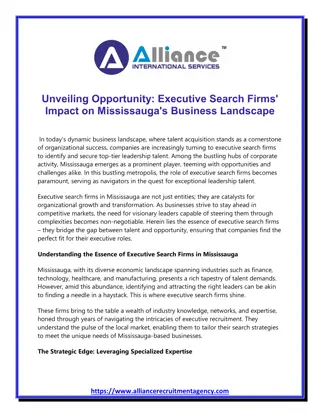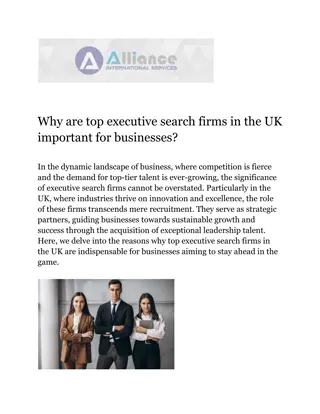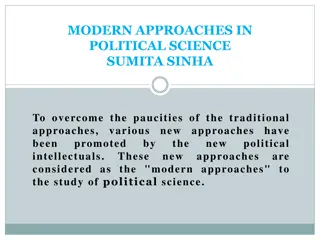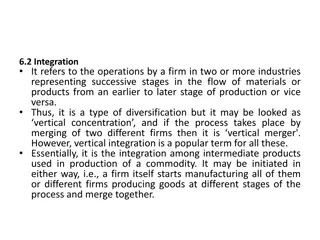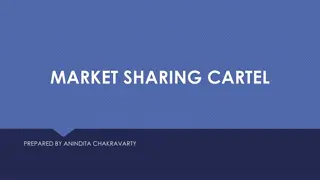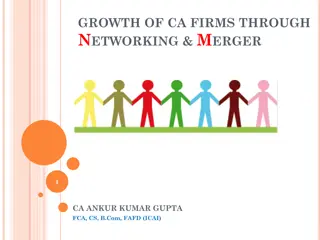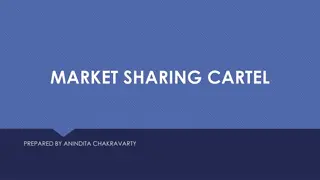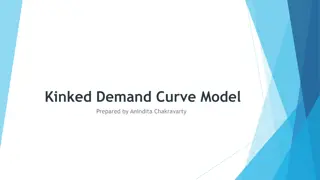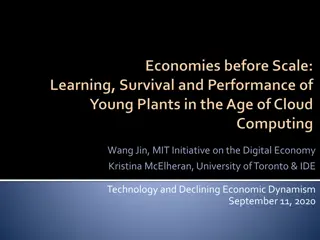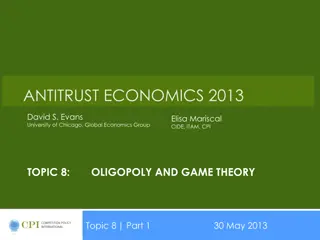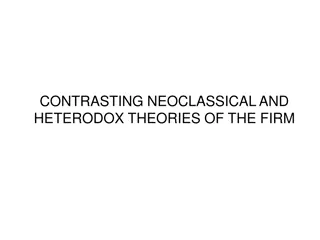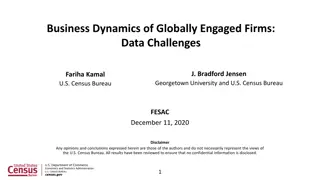Understanding the Theory of Firms: Neoclassical vs. Modern Approaches
The theory of firms is explored through the Neoclassical and Modern perspectives. Neoclassical theory focuses on profit maximization, while Modern theory delves into managerial, principal-agent, and transaction cost theories. The discussion covers criticisms of Neoclassical theory and the essential questions addressed by Modern theory in industrial economics.
Download Presentation

Please find below an Image/Link to download the presentation.
The content on the website is provided AS IS for your information and personal use only. It may not be sold, licensed, or shared on other websites without obtaining consent from the author. Download presentation by click this link. If you encounter any issues during the download, it is possible that the publisher has removed the file from their server.
E N D
Presentation Transcript
Lecture Two The Theory of the Firms Compiled by: Abdi T. 1
2.1 The Neoclassical Theory of the firm It is also called Microeconomic theory of the firm. The objective of the firm is taken here as purely profit maximizing economic agent operating in an exogenously given environment.. Behavior of a firm in pursuit of profit maximization can be analyzed in terms of: the quantities of inputs it utilizes production techniques it employs the quantity of outputs it produces, and the prices it charges (or cost-minimizing) Compiled by: Abdi T. 2
Profit is also maximized under conditions of perfect knowledge demand (which yields marginal revenue, MR) and cost conditions (from which marginal cost, MC, is derived). That is, when MR = MC, then profit is said to be maximized. (information) about Compiled by: Abdi T. 3
Criticism of neoclassical theory of the firm 1. Firms may not aim at profit maximization by equating MR and MC; instead the right price might be based on recovering full cost. 2. Imperfect information, and thus uncertainty, is not taken as a relevant factor in this theory since the firm operates in a timeless environment. 3. The organizational complexity of firms may impede the application of the profit maximization principle. 4. The motivation and decision-making of individuals are more fundamental than that of the organizations which they form. So as to overcome such drawbacks of the neoclassical theory of the firm, the modern theory of the firm is developed as discussed in the following section. Compiled by: Abdi T. 4
2.2 The Modern Theory of the Firm The modern theories are developed because some important questions are left unanswered in the neoclassical theory. Modern theory of the firm which can be further classified as: Managerial theory, Principal-Agent Theory and Transactions cost theory. Some economic activities are co-ordinated by the price system and some are administered explicitly within business organisation. Compiled by: Abdi T. 5
Whatever, the modern theory of the firm addresses the following and other crucial questions in studying industrial economics. Which economic functions will firms perform? What forces determine the size of firms? What types of organisational form will a firm adopt? Compiled by: Abdi T. 6
2.2.1 Managerial theory The managerial theory emphasises on the complex nature of the modern corporate firm. Firms are owned and controlled in a variety of ways. A firm must raise money to finance itself, decide how its business is to be managed, and Firms distribute its revenues to those who have contributed to its activity. According to Berle and Means, the influence of shareholders in the decision making process of large firms has diminished from the turn of 20th century. Compiled by: Abdi T. 7
The focus is on the firm (same as the neoclassical theory) particularly: the relationship between owners and managers and the possible deviation of objectives (but not necessarily deviation of interest) between managers and owners. The theory is based on two major principles/premises: There is separation of ownership and control: in a today s firm, ownership (by shareholders) is distinct from control (exercised by managers). Because of this, it is possible to conceive of a divergence of objectives between owners and controlling managers. Hence, there is a possibility of setting growth or revenue maximisation objectives as priority instead of profit maximisation. Compiled by: Abdi T. 8
Firms operate in an environment that affords them an area of discretion in their behaviour. That is, firms are considered as an active entities that make a difference in their economic performance. They are not considered as passive entities . There are Variants of the Managerial Theory. We consider here: Baumol s model and Marris s model. Compiled by: Abdi T. 9
2.2.1.1 Baumols Model As this model theobjective of firms is sales/revenue maximization. It supposes that hired managers may be more preoccupied by salesor revenue maximisation instead of profit maximisation. The typical performance report of a firm is usually in terms of sales not profit. Why? First, Sales data are easily accessible and hence one can have daily, weekly and monthly sales reports, while it requires some period of time (say three months or a year) to get reports on profitability. Compiled by: Abdi T. 10
Second, Salary and other monetary benefits of managers tend to be more closely related to sales revenue than to profits. Third, banks and other financial institutions look at sales revenue while financing business ventures. Fourth, trend in sales revenue is a readily available indicator of a firm s performance. Fifth, increasing sales manager s prestige while profits go to the business owners. revenue enhances Compiled by: Abdi T. 11
Six, managers find profit maximization as a difficult objective to fulfill consistently over time and at the same level. Profits fluctuate with changing economic conditions. Finally, growing sales tend to strengthen competitive spirit of the firm in the market, and vice versa. Compiled by: Abdi T. 12
Baumol argues that even if there is divergence of objectives between the owners and their managers, the objectives are reconcilable, as this divergence of objectives is not based on the divergence of interest and existence of vested interests on the part of the managers. Basically, it is argued that the managers are loyal to the success of the firm and set objectives professionally. Compiled by: Abdi T. 13
The model attempts to reconcile the behavioural conflict between profit maximisation and sales maximisation (i.e. its total revenue) by assuming that the firm maximises sales revenue subject to a minimum profit constraint. The revenue-maximising level of output is the level at which the marginal revenue is zero and the elasticity of demand is unity. This level of output that can be produced when constrained by minimum level of profit could be different from the revenue-maximising level of output. Compiled by: Abdi T. 14
Baumol calls the difference between the maximum possible level of profit and minimum constrained profit sacrificeable . In his view, this profit will be voluntarily given up by the firm in order to increase sales revenues. If the voluntarily given up level of profit is too apparent, it would tend to attract other firms operating in the same market, and would tend to create the ultimate threat of take-overs. This is why the sacrifice will be done quietly and only in a way which doesn t look like sacrificing. Compiled by: Abdi T. 15
In any event, the profit maximising output will generally be less than the revenue-maximising level of output. The profit-constrained revenue-maximising output (Qc) may be greater than or less than the revenue- maximising output (Qr). If Qc < Qr, then the firm will produce Qc. If Qc > Qr, then the firm will produce Qr. Baumol argues that the unconstrained equilibrium position never occurs in practice. NB: Qp = profit maximising output; Qr = revenue- maximising output; Qc = revenue-maximising output, subject to a minimum profit constraint, c Compiled by: Abdi T. 17
2.2.1.2 Marriss Model Marris suggest that managerial control would lead to balanced growth as an objective, showing that shareholders were a less important constraint on such firms than financial markets. Marris defines firm s balanced growth rate (G) as: G = GD = GC .. (1) where GD and GC are growth rate of demand for the firm s product and growth rate of capital supply to the firm, respectively. The model is dynamic in the sense that it incorporates the issue of growth of the firm. Compiled by: Abdi T. 18
In the Marris model, where the supply-growth and demand-growth relationships are satisfied, there will be a unique state of growth and profit equilibrium. Like Baumol s model, it assumes that managers will act to maximise utilities rather than profits, but in contrast to Baumol, it assumes that this will be achieved through growth rather than sales. The maximization of business owner s utility (Uo) implies maximization of demand for the firm s product or growth of the supply of capital. Growth arises through diversification into new products, rather than expansion of output. Compiled by: Abdi T. 19
The Three major principles around which general managerial theory came to be articulated during 1960s are as follows. 1. In a firm, the ownership (by shareholders) is distinct from control (exercised by managers) 2. Because of this separation, it is possible to conceive of a divergence of objective of owners and controlling managers. 3. Firms operate in an environment that affords them an area of discretion in their behavior. Compiled by: Abdi T. 20
2.2.2 The Principal - Agent Theory It also known as the Agency Theory There are two main actors Principal: is the owner of an asset Agent:is a decision makers who affect the value of that asset on behalf of the principal. The key features of principal-agent problems are: Principal knows less than the agent about something important, and their interest conflict in some way. Compiled by: Abdi T. 21
Three types of factors which brings principal- agent problems 1st is problems where agents can do some costly action to improve outcomes for the principal but the principal can t observe the action. These are known as effortaversion/moral hazard problems. 2nd is one includes problems where agents and principals can t express the difference among them. Compiled by: Abdi T. 22
3rd is hidden information models, but this category does not seem very well-defined. For example, managers in firms who take actions that advance their own careers but hurt shareholders, sounds like an effort aversion problem with a different definition of effort. Compiled by: Abdi T. 23
Principal-agent contract.Agency theory focusing on contracts between the principal and the agent. The Contracts: The organisation can be classified on the basis of the views/positions on contracts. There are two main such approaches: Monopoly: which views contracts as a means of obtaining or increasing monopoly power; and Efficiency: which views contract as a means of economising. theory focuses on the theories of industrial Compiled by: Abdi T. 24
Agents act differently when they are insured than they would otherwise. For instance, insured patients make more trips to the doctor than they would without insurance One of the purposes of insurance is to reduce the private cost of going for help in event of accident, but it could be argued that when there is overuse of this kind the private cost should be increased. At any rate, these examples are traditionally referred to as moral hazard . Compiled by: Abdi T. 25
Moral Hazard: Conflict of interest and the existence of information asymmetry lead to the problem of moral hazard. Where interests and objectives of the agent are different from that of the principal, and the principal cannot easily tell to what extent that agent is acting self-interestedly in ways diverging from the principal s interests, and then the problem of moral hazard arises. In the literature, terms such as: shirking, hidden action problem and post contract opportunism are used interchangeably with the concept of Moral Hazard. Compiled by: Abdi T. 26
Shirking is the moral hazard arising from the employment contract. Principal-agent theory is more concerned with implications for shirking, i.e., a reduction in effort by an agent who is part of a team. There may be a slight declining in total output as a result, but the cause will usually be unidentifiable. The shirking manager knows that his/her diminished effort is unobservable. What the principal can do, in the formulation of contracts, to offset shirking (and other types of management misbehaviour), is the key problem of principal - agent theory. Compiled by: Abdi T. 27
Thus, it is essential to think about contracts between principals and agents in two parts: (i) Risk-sharing: With fixed probabilities and payoffs, the agent s expected utility will be a decreasing function of his risk aversion. To convince the agent to sign a contract, therefore, the principal must offer payoffs that are either more generous or more equal as the agent becomes more risk averse. Compiled by: Abdi T. 28
(ii)Incentives: By specifying different payments for different outcomes, the contract sets up incentives for the agent as he chooses an effort level. If under a given contract payments are larger for higher outcomes, there will be higher effort. iii. Salary plus a bonus based on the performance of the company. Compiled by: Abdi T. 29
iv. Development of efficient ways of monitoring the performance of individual managers (or management teams). 1-5 group works v. Bonding (where the agent makes a promise to pay the principal a sum of money if inappropriate behavior by the agent is detected) and vi. Mandatory retirement payments. Compiled by: Abdi T. 30
2.2.3 The Transaction Cost Theory The neoclassical school is based on the assumption of zero transaction cost. Decision makers can acquire and process any information they wish instantly and costlessly. They possess perfect foresight and, hence, are able to write complete contracts that can be monitored and enforced precision. with absolute Compiled by: Abdi T. 31
The zero transaction cost implies that institutional arrangements inconsequential role in the economic process. There is recognition that political, legal, monetary, and other institutions exist, but they are regarded as neutral in their effect on economic outcomes and largely ignored. In other words, institutions are taken as allocationally neutral. In such a situation, decision makers operate with perfect information and perfect foresight. play an Compiled by: Abdi T. 32
It should be noted that in neoclassical theory, the price system is the only (explicitly modeled) device that is identified as a means for coordinating different activities. Administrative coordination is disregarded because it is generally not thought to be necessary in a market-driven system. Compiled by: Abdi T. 33
However,in the real world institutional structure affects both transaction costs and individual incentives and hence economic behavior. Why the existence of positive transaction costs makes it necessary to view institutions as endogenous variables in the economic model? A distinguishing feature of the new institutional economics is its insistence on the idea that transactions costs are costly. Transaction costs are encountered universally because of the character of the individuals who make decisions. Compiled by: Abdi T. 34
What are the causes of transaction cost? Bounded rationality, refers to the imperfect ability to solve complex problems. Opportunism relates to how people will respond to conflicts, given the existence of bounded rationality. opportunistically if they act in their self interests by, for example, finding loopholes in contracts. If there was unbounded rationality, the potential opportunistic behavior would be known, and avoided. They will behave Compiled by: Abdi T. 35
Asset specificity: refers to assets, involving non- trivial investment, that are specific to particular transactions (e.g. skills in an employer-employee contract). Asset specificity refers either to physical or human elements in the transaction Compiled by: Abdi T. 36
In general transaction costs are costs of running the economic system. These costs arise from the establishment, use, maintenance, and change of: Institutions in the sense of law; Institutions in the sense of rights; Transaction costs arising from informal activities connected with the operation of the basic formal institutions. Compiled by: Abdi T. 37
We can identify three types of transaction costs. Each of the three may have two cost elements, fixed transaction costs, the specific investments made in setting up institutional arrangements, and the variable transaction costs that depend on the number of volume of transactions. Market Transaction Costs: Market Transaction Costs include: cost of screening and selecting a buyer or seller; the cost of preparing contracts which includes the cost of obtaining information on the good or service; the cost of bargaining & negotiating a contract; cost of monitoring & enforcing the contractual obligations. Managerial Transaction costs:The costs of implementing the labor contracts that exist between a firm and its employees. Compiled by: Abdi T. 38
Political Transaction costs: market and managerial transactions are assumed to take place against a background; institutional consistent with a capitalist market order. well-defined political arrangements Compiled by: Abdi T. 39
2.3 The Growth of the Firm 2.3.1 The Rationale for Growth of the Firms Growth is one of the performance indicators of a firm. There are four theories that attempt to explain the determinants of the growth of the firm. They are: Life-Cycle Theory Downie s Theory Penrose s Theory and The Marris s Theory Compiled by: Abdi T. 40
2.3.1.1 Alternative Motives for Growth 2.3.1.1 Life Cycle Theory: Growth as a Natural Process The theme of the theory is that growth is a natural process. The empirical observation that shows firms grow as a natural process over time. Growth is an empirically established trend and daily- observed phenomena. Most large firms that we see around were small when they were established, grew continuously and attained present status in the course of time. If this is a common observation then growth is a natural process as observed in biological growth of organisms, which are born, grow to maturity and die. Compiled by: Abdi T. 41
A firm is created, grows, matures and finally dies out like any biological species. This is captured by the product-life cycle or the Sigmoid Curve / S-Curve/. For example, in the young firms; There is short hierarchy in the organizational structure Young firms allow management economies It is easier to handle and transmit information concerning the company s product or idea at the early stage of a firm. There is high communication in the firm, which implies prompt and flexible decision- making. Compiled by: Abdi T. 42
As a result of such managerial attributes and hence competence, firm s growth rate accelerates the objective of management and shareholders coincides But later on Managerial diseconomies of older firms arise Growth slows. The Life Cycle Theory can be depicted by the following diagram. profit raises Compiled by: Abdi T. 43
Figure: 2.4 Sigmoid Curves Compiled by: Abdi T. 44
2.3.1.2:Downies Theory or The Theory of Profit Constraint It also called Downie s theory in the literature. According to Downie, alternative forms of market structure and conventions govern business behavior. It is concerned with the way in which alternative forms of market structures and the rules of the game lead to the divergences in efficiency and the rate of technical progress among firms. For him in an industry, there will be dispersion of efficiency across the firms, i.e. Some firms have greater efficiency than the industry average while some others have lower efficiency. Compiled by: Abdi T. 45
The source of variation in efficiency (measured in terms of unit costs) across the firms is their technical processes. Efficiency variation is attributed to variation in technical progress. Firms with superior technology are assumed to be more efficient. Given the competitive environment and assuming that the firms pursue the growth maximization objective, the process of growth according to Downie s model starts with steady encroachment on the market share of less efficient firms by more efficient firms. Compiled by: Abdi T. 46
The efficient firms having advantageous access of the means of growth will be able to encroach on the market shares of the less efficient firms more or less rapidly. Efficient firms take over large market shares of less efficient firms. The means of the growth are capacity of production and customers. These can be examined from the supply and demand sides of growth of a firm. Compiled by: Abdi T. 47
i. Supply side: To expand capacity, investment in new technology is an optional case. Finance is needed for expansion, which in turn depends on the rate of profit generated. Thus, the rate of capacity expansion is positively related to the rate of profit and/or efficiency. ii. Demand Side: According to Downie, an efficient firm better technique or efficient production may be able to offer price discounts for its product to attract new customers. If the firm is to grow, then it has to be price competitive, in terms of selling at lower prices.. Compiled by: Abdi T. 48
However, lower prices mean lower profit for the firm The attraction of new customers or expansion of market by the efficient firm through its price reduction strategy will be feasible up to certain limit. This is possible as long as it is operating on the elastic zone of its demand curve, beyond which further reduction in price for expanding the market may lead to a reduction in the rate of profit for the firm. Hence, there are two opposite forces in the growth process of the firm - the supply side (the capacity) of growth, which varies positively with the rate of profit and the demand side, which varies inversely with the rate of profit after some level of profit. Compiled by: Abdi T. 49
Fig: 2.5: The Downies Model representation Compiled by: Abdi T. 50


